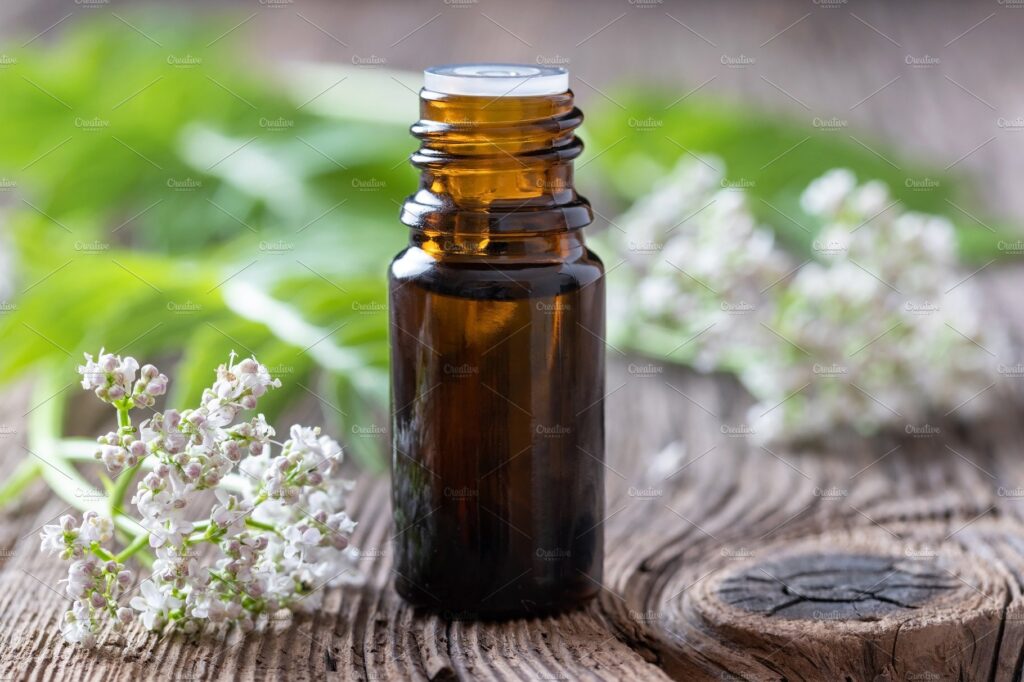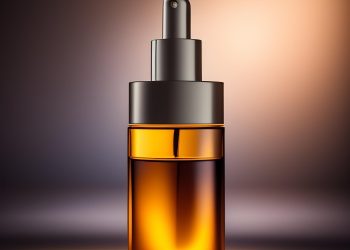Do you experience tingling, burning or gnawing pain in the legs when you relax, lie down or try to sleep? If yes, you’re not alone.
Also referred to as the Willis-Ekbom Disease, restless leg syndrome (RLS) affects one out of 10 adults in the United States [1].
RLS is a type of neurological disease marked by an “irresistible urge” to move the legs to stop the uncomfortable sensations [2, 3].
Most of these symptoms happen at night when the person is at rest. Experts believe that relaxation or lying down “activates the symptoms” [4].
The exact cause of RLS is not clear. However, it is believed that genetics play an important role. Some studies also point out that low levels of iron in the brain may also be a probable cause.
Medications such as dopamine agonists are frequently prescribed by doctors but because it can make you sleepy, it can also have adverse effects on your work, or even put you at risk in some situations, such as when you are driving [5].
Because of this, it is certainly a smart idea to rely instead on natural remedies that will provide relief without putting you at risk.
13 Natural Ways to Treat Restless Leg Syndrome
1. Exercise
Even if you don’t suffer from restless leg syndrome, exercise is a must as it keeps the body healthy and strong.
But for those who are debilitated by RLS, exercise is one of the cheapest, safest and most effective ways to tone down the symptoms and get better sleep at night.
In fact, for a long time, it was the “only nonpharmacological treatment option” available for people who complain of this problem [6].
Hundreds of articles prove of its efficacy and safety.
In a study conducted by American researchers, 28 participants who engaged in a 12-week exercise program of lower body resistance training and aerobics three days a week experienced significant improvement in their condition [7].
Similar positive results were yielded by other team of scientists who also probed this matter [6, 8].
The New York Times meanwhile recommends “regular, moderate exercise” as a preventive measure for nocturnal leg cramps.
What You’ll Need:
- 1 yoga mat
Recommended Directions:
- Put your yoga mat on the floor.
- Sit on it.
- Spread your legs to form a letter V shape.
- Stretch your arms forward and reach your toes using your hands.
- Do this for 15 minutes, twice a day, once in the morning and once before you sleep.
- This will help relax tense muscles and reduce severity of tingling sensations in the legs.
2. Lavender Oil
For centuries, lavender oil has been widely used in cosmetics as well as in traditional medicine [9].
Highly regarded for its relaxing and calming properties, lavender is thought to help in restless leg syndrome by relieving tense muscles and toning down stress levels.
After all, it’s a proven sedative and antidepressive agent [10].
Its positive effects on patients with restless leg syndrome were documented in a 2015 study performed by Iranian researchers [11].
Results reveal that out of the 70 patients with this condition, those who were given massage with lavender oil for three weeks reported a noticeable decline in symptoms [11].
Not only is it a “practical and cost-effective” treatment for leg cramps, it is also very safe as there have been no adverse effects found [11].
What You’ll Need:
- 3 drops of lavender oil
- 1 teaspoon of jojoba oil
Recommended Directions:
- In a bowl, mix lavender oil and jojoba oil.
- Transfer oil mixture to a dark-colored glass jar with a tight-fitting lid.
- Seal the jar and shake it to blend the oils.
- Put a small amount on your palm.
- Rub your palms.
- Massage the bottom part of your feet with the oil.
- Work your way up to the legs.
- Do this every night for 10 to 15 minutes before going to bed.
- You can also try inhaling the oil while you massage to help induce sleep.
RELATED: 11 Health Benefits of Lavender Oil That You Should Know
3. Massage
Not only does massage relieve pain and alleviate stress, it can also boost blood circulation and enhance one’s health and wellbeing [12, 13].
That’s why it doesn’t come as a surprise that it’s one of the most recommended interventions for restless leg syndrome.
One clinical trial reports that a 35-year-old woman suffering from nocturnal leg cramps was given a 45-minute massage twice a week for three weeks [14].
Her record logs show that symptoms such as sleeplessness, desire to move the legs and tingling pain were all reduced after the trial period [14].
There are various possible explanations for this.
Massage is said to release dopamine that alleviates the symptoms, counter stimulation in cerebral cortex to reduce discomfort, regulate neural activities in the thalamus, and enhance blood circulation, restoring “blood gas balance” [15].
What You’ll Need:
- 2 drops of chamomile oil
- 1 drop of lavender oil
- 1 teaspoon of sweet almond oil
Recommended Directions:
- Put all the oils in a mixing bowl.
- Stir well.
- Transfer contents to a glass jar.
- Shake to blend well.
- Apply a small amount on your legs and feet.
- Massage for a few minutes.
- Do this 30 minutes before your bedtime.
- Repeat procedure in the morning when you wake up.
RELATED: 12 Easy Ways to Get Rid of Foot Cramps
4. Tonic Water
Tonic water isn’t just something you use for your cocktail.
It can also be helpful in ameliorating the pain and discomfort caused by restless leg syndrome.
This carbonated beverage contains a compound called quinine, which is believed to have a relaxing effect on the nervous system, thereby providing relief from leg cramps.
Apart from relaxing the muscles, it also promotes blood flow to the muscles.
Clinical data from a 1995 study states that quinine significantly lowered the frequency and severity of cramping in the legs after a four-week treatment period [16].
Other studies confirm the efficacy of this compound for people with RLS [17, 18].
It’s important to take note, however, that large doses of this compound have some adverse effects.
Make sure that you don’t exceed in the recommended amount, which is 20 mg per eight ounces of tonic water [18].
What You’ll Need:
- 1/4 cup of tonic water
Recommended Directions:
- Drink tonic water slowly 15 to 30 minutes before going to bed.
- It’s important to sip tonic water slowly to give ample time for the body to absorb quinine.
5. Blackstrap Molasses
Deficiency in iron may be one of the possible factors that cause restless leg syndrome, according to a study published in the Sleep Medicine Journal [19].
Similar findings regarding this matter were obtained in various other studies [20, 21, 22].
If you suspect that you are deficient in this mineral, and this is what’s causing your leg cramps that keep you up at night, try using blackstrap molasses.
This by-product of sugarcane processing is a great source of iron [23].
Five tablespoons of this provide up to 95 percent of the daily recommended allowance of iron [23].
What You’ll Need:
- 1 tablespoon of blackstrap molasses
- 1 cup of water
Recommended Directions:
- Add blackstrap molasses to water.
- Drink it 30 minutes before going to sleep.
- For best results, do this remedy everyday for one to two weeks.
6. Valerian Oil
Many people who have trouble sleeping at night use valerian to get the rest and relaxation that they need. Valerian is indeed a popular remedy for insomnia and other sleep disorders.
The good news is, it can also help treat restless leg syndrome.
Researchers from the University of Pennsylvania in the United States investigated the effects of 800 mg of valerian on people with this condition [24].
Collected data show that those who used valerian experienced significant improvement not only in RLS symptoms but also in sleep quality [24].
This positive outcome indicates that valerian with its natural relaxation effects is a viable alternative treatment for sleep disturbances such as nocturnal leg cramps [24].
What You’ll Need:
- 5 drops of valerian oil
- 1 teaspoon of olive oil
Recommended Directions:
- Pour three drops of valerian oil in a glass jar.
- Add olive oil.
- Shake glass jar to blend the two oils.
- Massage legs and feet using this oil mixture.
- Put the remaining valerian oil on a piece of tissue.
- Inhale the tissue for several minutes.
- Do these two techniques half an hour before bedtime.
7. Chamomile
A cup of chamomile tea is said to be an efficient way to induce sleep among those who are having difficulty relaxing at night [25].
This alternative remedy for insomnia has potent hypnotic effects that can also reduce stress and anxiety that prevent one from getting a good night sleep [26].
A 2011 study featured in the BMC Complementary and Alternative Medicine validates the effectiveness of chamomile in treating chronic insomnia, resolving daytime drowsiness as well [27].
Although there are no studies that can show that chamomile is a good solution for RLS, many people still use it.
It’s probably because it helps them sleep better at night even with the pain, tingling and other uncomfortable symptoms caused by this condition.
What You’ll Need:
- 2 tablespoons of chamomile flowers
- 3 cups of water
- 1/4 slice of apple
- 1 basin of warm water
- 2 drops of chamomile oil
- 1 drop of frankincense oil
Recommended Directions:
- Submerge chamomile flowers in cool water.
- In a pot over medium heat, boil water.
- Add apple slice.
- Simmer until apple is soft.
- Remove from heat.
- Using a fork, mash the apple and mix into the water.
- Add chamomile flowers.
- Cover and steep for 15 minutes.
- Strain and cool a little before drinking.
- While drinking, soak your feet in a basin of warm water with chamomile and frankincense oils.
- Do this for 10 minutes.
- Do these remedies one hour before sleeping.
RELATED: 14 Health Benefits of Chamomile Tea (Backed by Science)
8. Coconut Oil
The tree from which this oil comes from has been called countless times as the “tree of life”.
It’s for a good reason, as this tree has multitude of benefits that you should definitely take advantage of.
Those who find it hard to sleep at night due to leg cramps can find comfort in using coconut oil.
Coconut oil has been found to have analgesic, antinociceptive and anti-inflammatory properties that are beneficial for people with RLS [28, 29].
Regular topical application of coconut oil can help reduce pain and discomfort caused by leg cramping.
What You’ll Need:
- 1 teaspoon of coconut oil
- 2 drops of lavender oil
- 1 drop of frankincense oil
Recommended Directions:
- Get a pan and put it on the stove over low heat.
- Warm coconut oil.
- Remove from heat.
- Touch the oil and see if the warmth suits you.
- Once it has cooled a little, rub coconut oil mixture all over your feet and legs.
- Massage using gentle circular motions.
- Repeat everyday to relax stiff muscles 30 minutes before going to bed.
RELATED: 9 Reasons to Use Coconut Oil for Nails Immediately
9. Almond
Apart from iron, people with restless leg syndrome have also been found to be deficient in vitamin E. This vitamin is believed to have stimulatory effects on the nervous system [6].
Daily intake of 300 mg of vitamin for one week can do so much in promoting blood circulation and reducing RLS symptoms [6].
In a study that can be found in the Western Journal of Medicine, it was reported that all the patients who suffer from severe leg cramps experienced “gratifying relief” after taking vitamin E three times a day [30].
Amazingly, it also worked in alleviating nocturnal foot and rectal cramps in one of the participants of the study [30].
Supplementation with vitamin E is recommended, or you can also eat more of vitamin E rich food sources such as almonds.
What You’ll Need:
- A bunch of almonds
Recommended Directions:
- Snack on almonds throughout the day.
- You can eat them as is, or include them in your food, such as toppings on your salad.
10. Warm Bath
Soaking in a warm bath has been proven effective in alleviating all sorts of pains, aches and other physical problems.
It’s probably because doing so relaxes tense muscles in the body, and at the same time, calms the mind.
Some people with restless leg syndrome report that they find relief from taking a hot bath or shower [31].
It would also help to infuse the bath water with essential oils with relaxation effects such as lavender oil or chamomile oil.
What You’ll Need:
- 10 drops of lavender oil
- Warm bath water
Recommended Directions:
- Pour lavender oil in warm bath water.
- Soak in the bath for 15 to 30 minutes.
- It would also be a good idea to fill the bathroom with lavender or chamomile oil aroma.
- Repeat remedy every night an hour before going to bed.
11. Peppermint Tea
Herbal remedies such as peppermint are widely used to support health.
Traditional healers have long relied upon peppermint tea to cure many types of medical conditions, including restless leg syndrome.
In a study that can be found in the Libyan Journal of Medicine, it was reported that the water extract from peppermint leaves demonstrated strong analgesic effects in animal subjects [32].
It does not have any anti-inflammatory properties but it does provide quick relief from pain, as revealed in the study findings [32].
The active compound in peppermint called menthol is what’s responsible for its analgesic effects [33].
Once peppermint is topically applied, menthol alleviates pain by causing a “feeling of coolness” and stimulating cold receptors [33].
What You’ll Need:
- 5 teaspoons of peppermint leaves
- 5 cups of water
Recommended Directions:
- Boil peppermint leaves in a pot of water.
- Simmer for 10 to 15 minutes.
- Pour peppermint tea to a cup.
- Drink the tea one hour before sleeping.
- Transfer the rest of the mixture to a basin.
- Soak a towel into the mixture.
- Wring out to get rid of moisture.
- Wrap towel around the legs.
- Wait for 30 minutes before removing.
- Pat it dry.
- Repeat remedy every night before going to bed.
12. Rosemary Oil
Like lavender, rosemary oil is also popular for its ability to induce relaxation and sleep.
It’s also a powerful analgesic that can provide relief for all sorts of pain-related conditions.
If you’re having a hard time dozing off due to restless leg syndrome, application of rosemary oil can help.
Brazilian researchers note that rosemary oil has analgesic, antinociceptive and antispasmodic properties that can help alleviate this condition [34].
It can also help you get a good night’s sleep, which can be difficult when you’re suffering from this type of disorder.
What You’ll Need:
- 7 drops of rosemary oil
- 2 teaspoons of almond oil
- 1 cup of hot water
Recommended Directions:
- Dilute rosemary oil in almond oil.
- Mix well.
- Put a few drops on your legs.
- Massage gently for 10 minutes.
- Soak a towel in hot water.
- Wring out excess water.
- Add oil mixture.
- When it’s no longer too hot to touch, wrap towel around the legs.
- Wait for 15 minutes before removing.
- Do this remedy every night half an hour before sleeping.
13. Cut Down on Caffeine, Alcohol & Nicotine
A high consumption of foods, drinks, and medicines that contain sedative or depressant components may contribute to restless legs syndrome. Even caffeinated drinks, alcohol and nicotine in cigarette may trigger RLS. An over-consumption of caffeine and alcohol has stimulating effects to the nerves of your leg muscles.
A 2015 study conducted on 1500 restless legs victims proved the negative impacts of alcohol and caffeine on the patients. The participants who avoided smoking and consuming alcohol for a certain period of time showed lesser symptoms of RLS.
Recommended Directions:
- Limit your alcohol consumption or eliminate it altogether.
- It’s recommended that you avoid consuming alcohol and coffee after 6 in the evening.
- Try as much as possible to replace cold and allergy medications with natural home remedies.
Some Q&A About Restless Leg Syndrome
Q. What are the symptoms of Restless Leg Syndrome?
A. People who have Restless leg syndrome often the following symptoms. These are:
- Uncomfortable sensation in the legs
- An irrestible urge to move the legs in order relieve these sensations
- Uncomfortable “itchy”, “pins” and similar feelings in the legs
- Difficulty sleeping at night
Q. What are the causes of Restless Leg Syndrome?
A. Restless leg syndrome may be caused by a number of reasons These are:
- Final stage renal disease
- Deficiency of iron in the blood
- Medications
- Alcohol and caffeine abuse
- Neuropathy
Q. What are the drugs to treat Restless Leg Syndrome?
A. There are several drugs that treat restless leg snydrome. These are:
- Dopominergic drugs
- Benzodiazepines
- Narcotic pain relievers
- Anti-convulsants or anti-seizure drugs
Q. Is it possible to have Restless Leg Syndrome in other parts of the body?
A. Unfortunately, yes. You can have symptoms of this problem in other parts of the body as well.
Q. Will taking vitamin and mineral supplements help relieve the symptoms of Restless Leg Syndrome?
A. If the cause of the restless leg syndrome is a vitamin or mineral deficiency, then you can take in supplements to treat it.
Wrapping Things Up
Indeed, restless leg syndrome can cause great discomfort to you. It can lead to many sleepless nights. Plus, it can affect your health as well.
You must not wait to treat this problem. Your first step should be assessing the cause of this problem and treating it properly.
Get relief from the pain and tingling sensation, and help yourself have the rest that you need using these home remedies.





